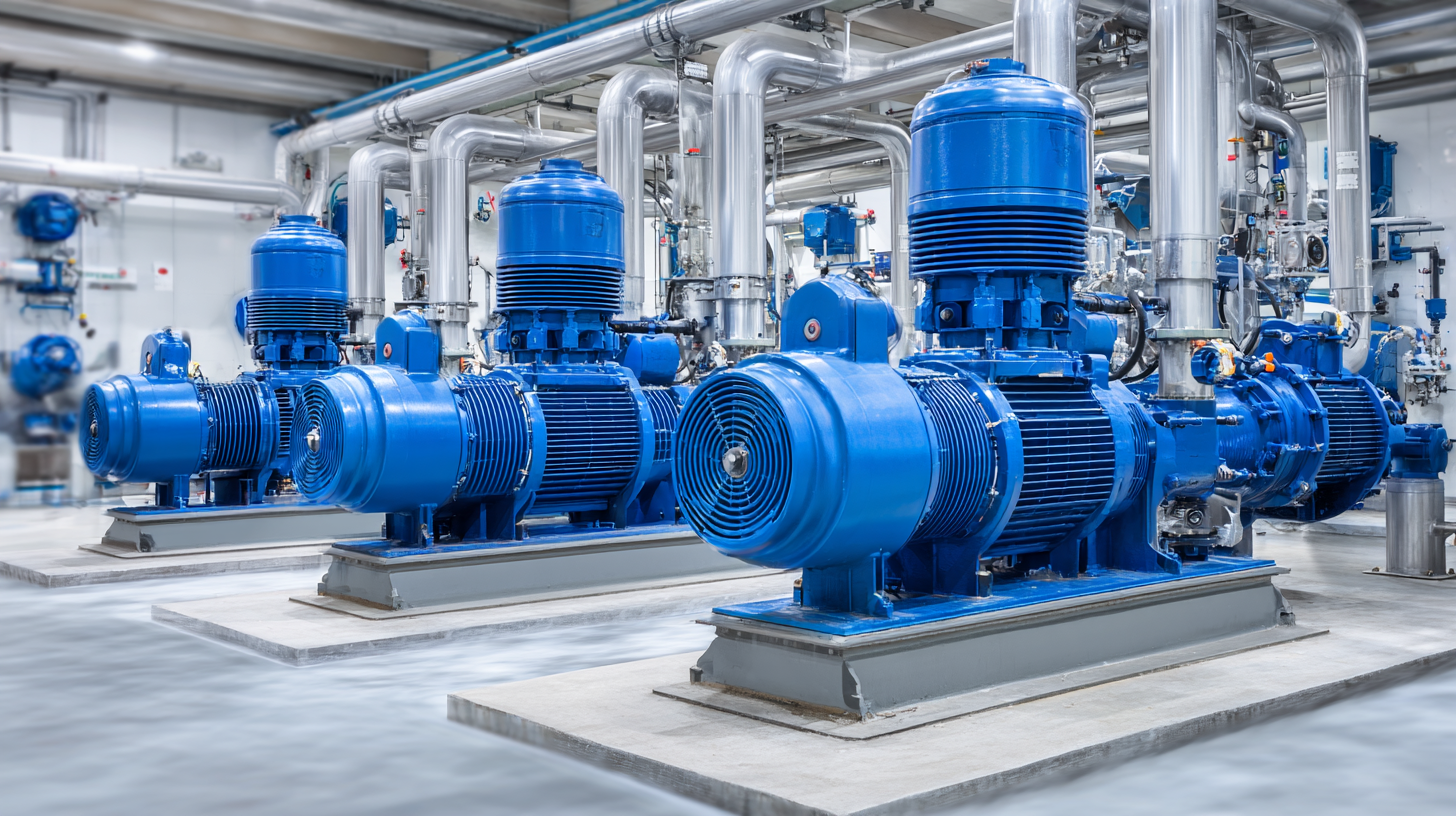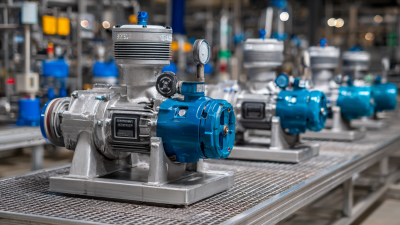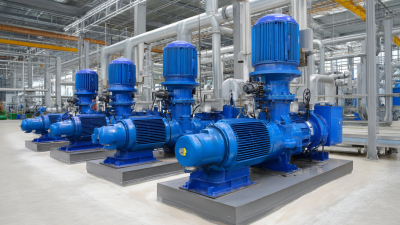Contact Us
7 Essential Tips for Choosing the Right Vertical Centrifugal Pump for Your Needs
When it comes to selecting the right vertical centrifugal pump for your specific needs, understanding the intricacies of the industry is crucial. According to renowned pump expert Dr. John S. Thompson, "The efficiency and performance of a vertical centrifugal pump depend significantly on the application it’s designed for." This statement underscores the importance of aligning your selection process with your operational demands to achieve optimal performance.
Choosing a vertical centrifugal pump involves various factors, including flow rate, head requirements, and the nature of the fluid being pumped. These components play a vital role in ensuring that the pump not only meets your immediate needs but also adapts to potential future challenges. As the market evolves and technology advances, making an informed decision becomes more critical than ever. With insights from experts like Dr. Thompson, you can navigate the complexities of pump selection more effectively.
In this guide, we delve into seven essential tips that will equip you with the knowledge necessary to make an informed choice. From understanding the specifications and materials to evaluating maintenance needs, our comprehensive approach will ensure that you select the most suitable vertical centrifugal pump for your operations, ultimately leading to greater efficiency and reliability.

Understanding Your Pumping Requirements: Flow Rate and Head Specifications
When selecting a vertical centrifugal pump, understanding your specific pumping requirements is paramount. The first critical specification to consider is the flow rate, which determines how much fluid the pump can move over a designated period. It's essential to calculate the required flow rate based on your application's demands, whether for irrigation, industrial processes, or waste management. Selecting a pump that can meet or exceed these flow requirements ensures optimal performance and efficiency.

Equally important is the head specification, which refers to the height the pump must raise the fluid. This serves as a measure of the energy required to move the liquid against gravity and through the entire piping system. Accurate assessment of the total dynamic head (TDH) is necessary to select a pump that can effectively deliver the fluid at the desired elevation while overcoming resistance from fittings, valves, and other components in the system.
By carefully evaluating these two key factors—flow rate and head specifications—you can ensure that the vertical centrifugal pump you choose not only meets your operational needs but also operates efficiently and reliably.
Evaluating Pump Material Compatibility for Your Fluid Type
When selecting a vertical centrifugal pump, evaluating the material compatibility for your specific fluid type is critical. Different fluids can react adversely with various pump materials, leading to corrosion, degradation, or even system failure. Recent studies on material compatibility in aerospace applications, particularly concerning monomethylhydrazine (MMH) and nitrogen tetroxide (MON-3), showcase the importance of understanding chemical interactions. These insights underline the need for thorough material evaluation, ensuring compatibility to maintain pump integrity and performance under operational conditions.
Additionally, different scenarios in industries such as oil extraction highlight the necessity of choosing the right materials. For instance, interactions during acidizing operations in oil wells can lead to the formation of asphaltic sludge, which emphasizes the need for pumps made from materials that resist such chemical conditions. In this light, manufacturers should consider the unique challenges posed by their specific environment and fluid characteristics, selecting materials that not only resist degradation but also enhance the longevity and efficiency of their pumping systems. The right combination of material and pump design will ultimately ensure operational effectiveness and reduce maintenance costs.
7 Essential Tips for Choosing the Right Vertical Centrifugal Pump for Your Needs
| Criteria | Considerations | Example Materials | Fluid Types |
|---|---|---|---|
| Corrosion Resistance | Assess the susceptibility of the pump material to corrosion based on fluid properties. | Stainless Steel, Polypropylene | Acids, Chlorine Solutions |
| Temperature Compatibility | Ensure the material can handle the operating temperature of the fluid. | Buna-N, Viton | Hot Water, Oils |
| Impact Resistance | Consider materials that can withstand impact or stress. | Cast Iron, PVC | Slurries, Wastewater |
| Abrasion Resistance | Check the material's capability to handle solid particles in the fluid. | Hard Metal, Rubber Linings | Slurry, Sand |
| Chemical Compatibility | Examine the potential reactions between the material and the fluid. | PVC, PTFE | Acids, Bases |
| Maintenance Requirements | Identify the ease of maintenance and repair on the pump casing. | Aluminum, Fiberglass | Clean Water, Mild Chemicals |
| Cost-Effectiveness | Balance material costs with durability and lifespan. | Thermoplastics, Cast Iron | Various Fluids |
Identifying Energy Efficiency Ratings and Their Importance
When selecting a vertical centrifugal pump, understanding energy efficiency ratings is crucial for optimal performance and cost savings. Energy efficiency is typically measured by the pump's Affinity Laws, which indicate how changes in speed affect power consumption. According to the Hydraulic Institute, pumps account for about 20% of global electrical energy consumption, highlighting the importance of choosing a pump that operates efficiently to reduce operational costs and environmental impact.

One critical metric to consider is the Pump Energy Index (PEI), which provides an objective measure of energy consumption relative to the pump's flow. A lower PEI indicates a more efficient pump. Industry studies reveal that an investment in high-efficiency pumps can lead to energy savings of up to 30%, significantly diminishing the total lifecycle cost. Moreover, selecting pumps with energy efficiency ratings in compliance with the latest ISO 9906 standards not only guarantees performance but also ensures that facilities are in line with environmental regulations, fostering sustainability initiatives within various industries.
Considering Pump Size and Installation Space Preferences
When selecting a vertical centrifugal pump, one of the crucial factors to consider is the size of the pump and the available installation space. The dimensions of the pump must align with the spatial constraints of your site. Measure the designated area carefully, taking into account height, width, and depth, to ensure that the chosen pump can fit without compromising accessibility for maintenance or operation.
Additionally, consider the pump's footprint, as some vertical centrifugal pumps may have a smaller base but extend vertically. This feature can be beneficial in environments with limited horizontal space. Assess any nearby piping, electrical connections, or equipment that might interfere with the pump installation. By prioritizing these spatial considerations, you can prevent potential installation challenges and ensure your machinery functions at optimum efficiency, ultimately saving time and reducing operational disruptions.
7 Essential Tips for Choosing the Right Vertical Centrifugal Pump
The chart below illustrates the primary factors to consider when choosing a vertical centrifugal pump, alongside their importance ratings based on industry feedback.
Assessing Maintenance Needs and Lifespan of Vertical Centrifugal Pumps
When selecting a vertical centrifugal pump, assessing maintenance needs and lifespan is crucial to ensure reliability and efficiency. One key factor is the pump's design and materials. Pumps constructed from corrosion-resistant materials can reduce maintenance demands, especially in harsh environments. Regular inspections of seals, bearings, and impellers are vital to identifying wear and potential failures early. Developing a maintenance schedule based on the manufacturer’s recommendations can significantly extend the life of the pump and enhance its performance.
Moreover, understanding the operating conditions can influence maintenance requirements and longevity. For instance, if a pump operates under fluctuating temperatures or pressure conditions, it may experience more wear and tear, necessitating more frequent checks and potential upgrades. Additionally, selecting a pump with a proven track record of durability in similar applications can provide assurance regarding lifespan. By carefully considering these factors, users can choose a vertical centrifugal pump that not only meets their immediate needs but also proves to be a wise long-term investment.
Related Posts
-

The Future of Industrial Centrifugal Pumps Innovations and Trends You Need to Know
-

The Essential Guide to Choosing the Right Boiler Condensate Pump for Your Home
-

Understanding the Efficiency of High Pressure Centrifugal Pumps in Industrial Applications
-

Maximizing Efficiency: The Role of Boiler Condensate Pumps in Energy Savings and System Performance
-

Unlocking the Power: How High Pressure Pumps for Water Revolutionize Industrial Applications
-

Maximizing Efficiency: The Ultimate Guide to Choosing the Right Vertical Centrifugal Pump for Your Needs
